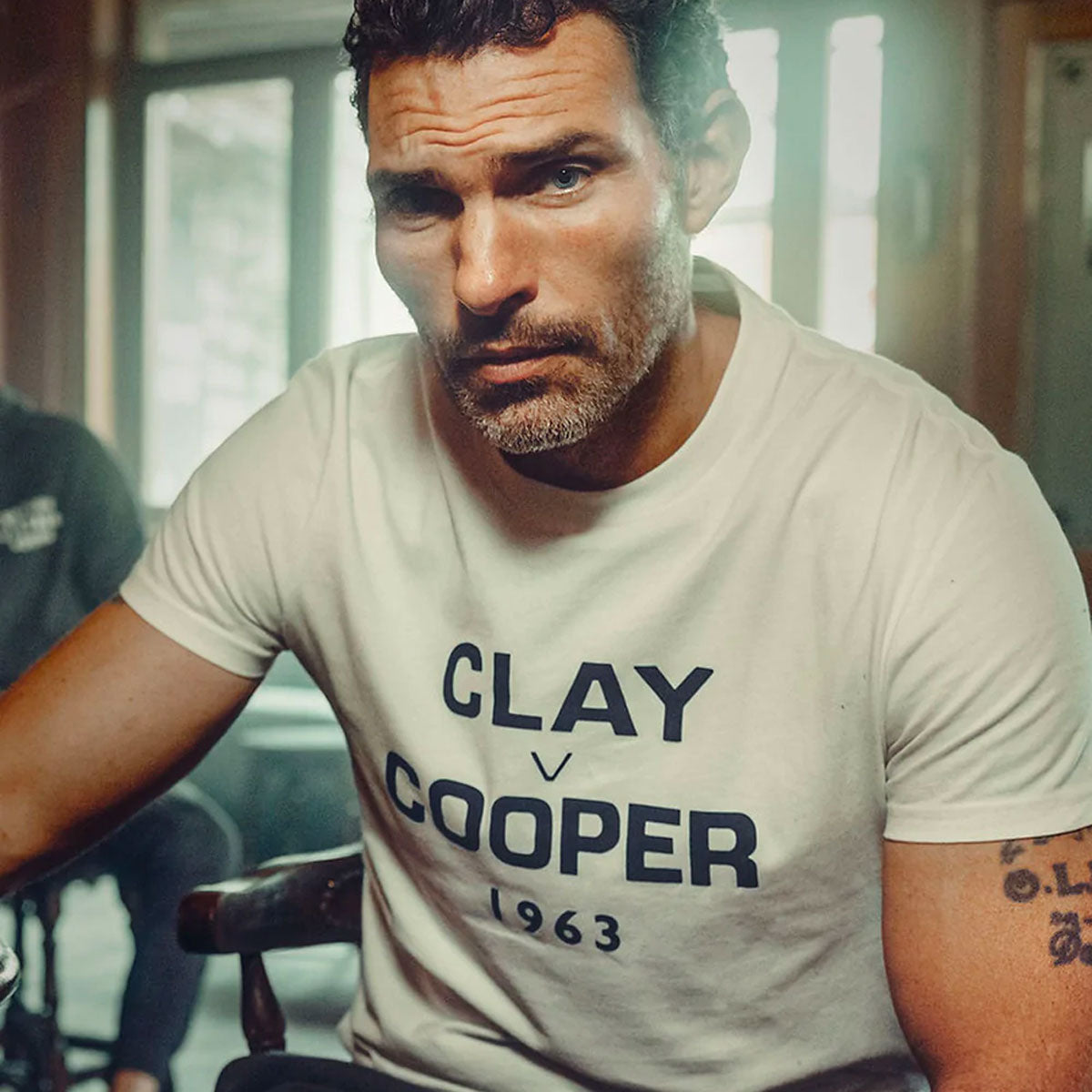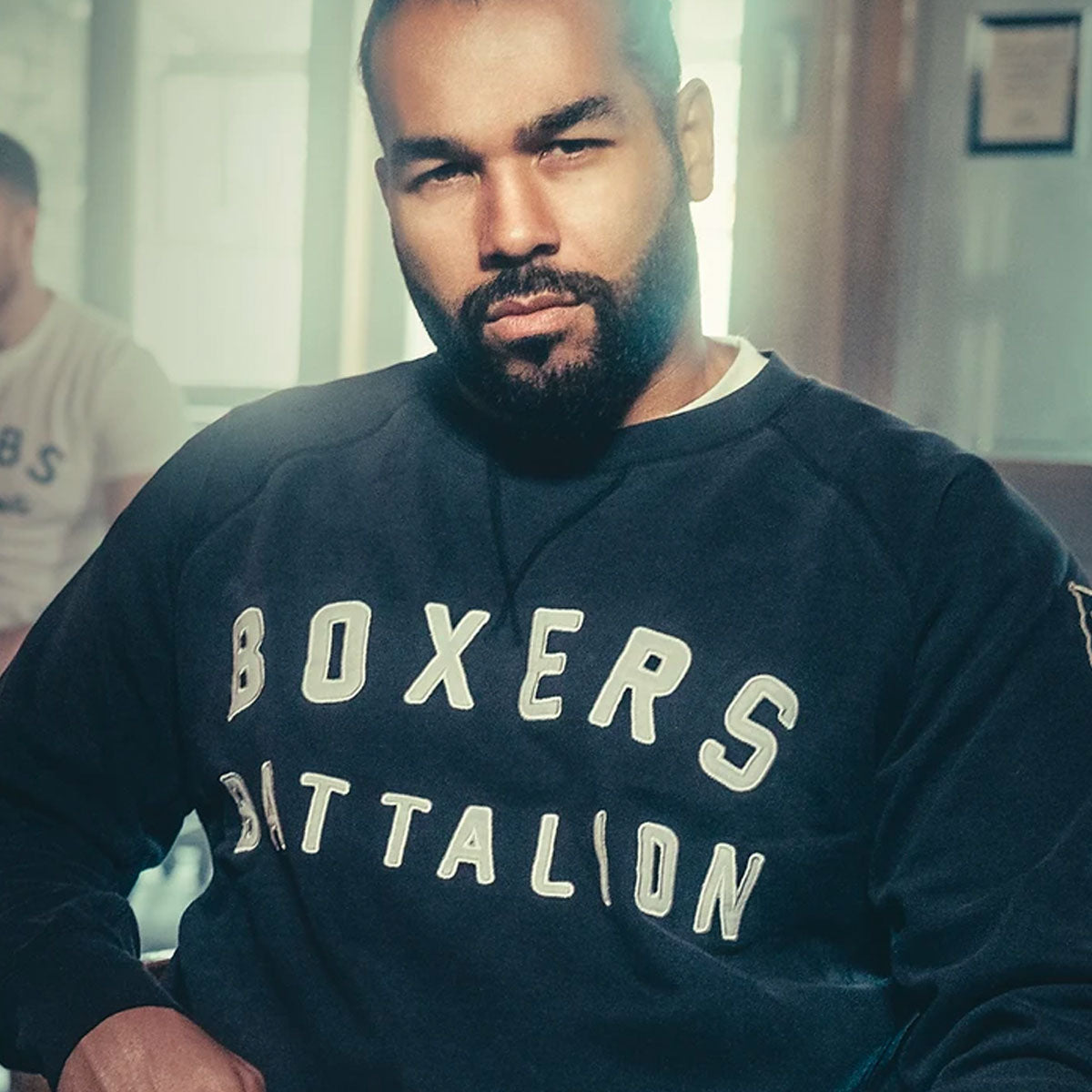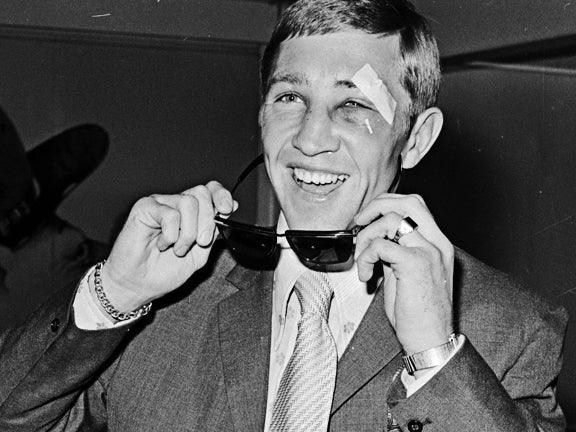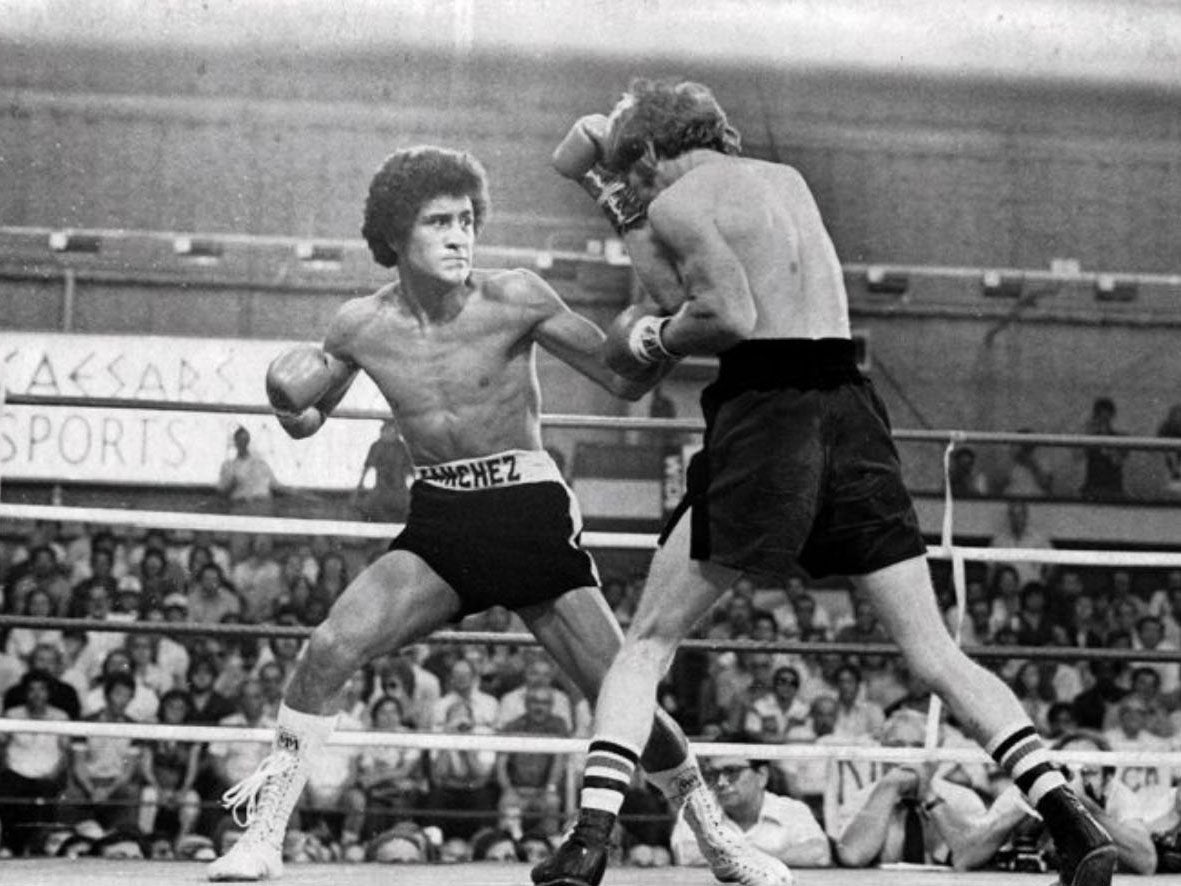Born on 28 June 1945, Ken Buchanan was brought up in suburban Edinburgh, on a housing estate called Northfield. Bullied as a kid, he begged his dad to box and shortly after had his wish granted as he walked through the hallowed doors of Sparta ABC. Ken’s auntie Agnes bought him a pair of gloves when he was eight years old and under the careful tutelage of trainer George Shaw, weighing around 50lbs, he won his first amateur title. The rest, as they say, is history.
Whilst juggling a carpentry apprenticeship as a teenager, Buchanan was leaving a trail of success behind him in the square ring. At 17 he won the Scottish senior title, plus a bronze at the European championships in Berlin. Two years later, in May 1965 he became ABA featherweight champion, shortly before turning professional.
At 20 years of age, Buchanan made his pro debut on 20 September 1965, against Brian ‘Rocky’ Tonks at the National Sporting Club in Piccadilly, London. Weighing bang on the featherweight limit, Edinburgh’s favourite fighting son stopped Tonks in the second round.
By the end of 1966, ‘The Fighting Carpenter’ was 16-0 and challenged for his first professional title. On 23 January 1967, Buchanan, who had now comfortably grown into a 135lb frame, took on John McMillan for the vacant lightweight Scottish Area strap at the Central Hotel, Glasgow. The future Hall of Famer was pushed to his limits that night against McMillan, who possessed a record of six wins, 10 losses and one draw, pipping the Glaswegian by one point over 10 rounds.
Nine months and six fights later, on 30 October 1967, Buchanan had his next notable test against ring veteran Jim ‘Spike’ McCormack, at the Sporting Club, Piccadilly, for a British lightweight title eliminator. Belfast’s fighting foe boasted a record of 42-38-12 and pushed Buchanan hard throughout the 12-round contest, with the scorecards separating the pair by only three quarters of a point. Despite climbing the ladder in the rankings, the Scot’s two significant fights to date hadn’t sent out a message to the lightweight division that he was a force to be reckoned with. That soon changed in his next fight.
On 19 February 1968, weighing in at only 131lbs, Buchanan challenged reigning British lightweight champion Maurice Cullen. Tyne and Wear’s 135lbs champion had only lost five in 47 outings at this point and had beaten decent domestic opposition such as Vic Andreetti and had notable points losses against long reigning European lightweight champion, Dave Charnley and world champion, Carlos Ortiz. The spotlight was on Buchanan to not only win, but to make a statement against the British champion who had held the strap since April 1965.

Unbeaten Buchanan certainly delivered to the fans at the Hilton Hotel in Mayfair, London. Despite putting up a valiant effort, the challenger was simply too strong and relentless, putting Cullen down four times en route to an eleventh-round stoppage. United Press International reported: ‘Buchanan put the former champion down for counts of four and seven in the 6th round and counts of eight and nine in the 9th. Buchanan carried the fight to Cullen from the opening bell and never let up. The end in the 11th came as something of a surprise since Cullen had come back from two knockdowns in the 9th to win the 10th round.’
Buchanan won his next nine outings over 23 months against nondescript opposition. When the competition bar was raised on 29 January 1970 to challenge for the vacant European lightweight strap, Buchanan fell short against sturdy opposition. Both fighters weighed in substantially below the 135lbs limit, with his opponent 3lbs off the mark, while the Scot was a touch under the modern-day super featherweight limit.
Fighting at the Palacio de los Deportes, Madrid against tough Spaniard, Miguel Velazquez, Buchanan was floored by the tough Spaniard in the ninth session. After 15 gruelling rounds, referee Piero Brambilla awarded the contest to Velazquez 72-69. Velazquez defended the strap over the next couple of years and in 1976 won the WBC super lightweight title. Buchanan in the meantime was undeterred and still had his eyes on the main prize. The balance of 1970 turned into a whirlwind of excitement.
Four weeks later Ken was back to his winning ways, comfortably outpointing the French lightweight champion, Leonard Tavarez at the Café Royal, Piccadilly. After a cruising victory on points against New Yorker Chris Fernandez on 6 April, Buchanan defended his British title against Brian Hudson six weeks later at the Empire Pool, Wembley. Then came the big one.
On 26 September 1970, Buchanan took on Panamanian legend, Ismael Laguna, who was in his second term as undisputed lightweight champion of the world. The fight took place at the Hiram Bithorn Stadium, San Juan, Puerto Rico, with The Ring Magazine and WBA straps on the line. Incredibly, the British Boxing Board of Control (BBBofC ) ordered Buchanan not to fight Laguna because he had been stripped of the WBC belt after refusing to take on a mandatory defence against Mando Ramos and the BBBofC didn’t recognise the WBA title as a genuine strap. Buchanan ignored the board. 
Buchanan vs Laguna 1970
Laguna was a 5/2 bookies favourite to retain his titles in 100 degrees of Puerto Rican heat, with popular opinion leaning towards a comfortable points victory for the champion. Despite an inch and a half height advantage, Laguna’s reach was two inches shorter than Buchanan and after a slow start from the Scot, that reach advantage paid dividends as he systematically kept pumping out his jab in Laguna’s face. After 15 hard fought rounds, very little separated the pair. The judges’ scorecards read, 144-143 to Laguna, with Buchanan gaining the lions share of 145-144 and 144-143. Associated Press reported: ‘Scotland's Ken Buchanan came on strong in the final rounds yesterday to wrest the world lightweight title from Panama's Ismael Laguna on a split decision in a spirited 15 round bout. It was close all the way. Laguna, bobbing and weaving, carried the fight to the stand-up challenger, fighting in the classic style. Laguna scored with chopping right leads and short blows inside. Buchanan, moving in behind a snapping left jab, came on in the 5th and 6th rounds. From the 12th on Buchanan dominated the fight. In the 12th he shook the champ with a series of solid shots to the head that forced Laguna to hold. Encouraged by his success, Buchanan pressed on with follow-ups that Laguna couldn't block.’
Ten weeks later, giving away 10 lbs to unbeaten Donato Paduano (22-0) at Madison Square Garden, the wily Scot outpointed the Canadian welterweight champion with ease, in a non-sanctioned title fight. Two months later Buchanan defended his world titles at the Sports Arena in Los Angeles against Ruben ‘The Maravilla Kid’ Navarro. Along with his Ring and WBA belts, the WBC strap was now in the mix. Bearing in mind Navarro took the fight with only 72 hours’ notice, he gave a good account of himself, albeit, Buchanan won by a wide points margin. After the fight, Buchanan said, ‘I was slow and cold at the beginning. I turned my back on his rushes because I wasn't used to this. They wouldn't allow it in England. But I got warmed up and I think the people appreciated good boxing.’ Navarro expressed to the Scot, ‘You're a fine fighter, a good champion and I know of only one man who can beat you - me, when I've had more time to train.’

Buchanan vs Navarro 1971
Three months later Buchanan stopped former WBA and WBC super lightweight champion, Carlos Hernandez in the eighth round at the Empire Pool, Wembley. Finishing off the year in style, on 13 September 1971, Buchanan and Laguna locked horns again, but this time at the mecca of boxing, Madison Square Garden, in front of a little over 13,000 people. This time round the contest was more of a brawl than the first encounter, which saw Buchanan’s eyes swelling up at an alarming rate. With one eye almost shut and the other not far behind, his cornerman took a razor blade and cut open the swelling to relieve the pockets of blood which had built up, which in turn immediately improved Buchanan’s sight. Despite being bruised, bloodied and battered, the Scot took the fight to Laguna and was unlucky not to have forced the stoppage in the penultimate round. Buchanan took a comfortable points decision.
Shortly after losing to the Scot, Laguna retired and was rightly inducted into the International Boxing Hall of Fame (IBHOF) in 2001. In the meantime, Buchanan won the American Boxing Writer’s Association’s Fighter of the Year in 1970 and was awarded the British Sports Writers' Sportsman of the Year Award in 1971.
After clocking up two further victories in non-sanctioned contests, Buchanan was challenged by a hungry Panamanian known as ‘Manos de Piedra.’ The opponent boasted a record of 28-0, with 24 of those victories coming by way of stoppage. On 26 June 1972, Buchanan stepped through the ropes at Madison Square Garden in front of over 18,000 fans to face the fearsome Roberto Duran. The fight went down in boxing folklore, more for the controversy than anything else.
Buchanan vs Duran 1971
Shortly after the opening bell Duran scored a flash knockdown. From then on, the writing was on the wall. In his inimitable style Duran steamrolled Buchanan and as the dying seconds approached for the end of the thirteenth round all three judges had Duran ahead by a country mile. As the bell rang for the end of the round, both fighters continued to trade punches, but Buchanan was the one that hit the deck holding onto his groin in excruciating pain. Duran showed little mercy believing the Scot had hit the deck because he was losing and faked the injury as a way out. Buchanan on the other hand claimed the blow was so hard it dented his groin guard and pierced his right testicle. Slow motion replays did indeed confirm Duran landed with a low blow, but the decision was never overturned and Buchanan never won his world titles back. Many say Duran employed roughhouse tactics to win the fight, but it’s hard to deny Panama’s most famous fighting son that he was on course for victory. Even if he didn’t throw a punch for the remaining two rounds the titles were going back to Panama. His raw hunger and desire to change his life through the financial trappings of boxing was not something ‘El Cholo’ wanted to leave to the judges’ scorecards, with or without controversy.

Buchanan vs Duran 1972
A rematch date was originally set for 28 June that same year, but the Panamanian government insisted he made his maiden defence on home soil. Consequently, Duran did a one round demolition job on Greg Potter in Panama City and Buchanan was left without a title shot. A second agreement was then issued and signed by Duran shortly after, but once again he breached the contract and smashed Lupe Ramirez in under three minutes, once again, in Panama. Despite an estimated three-year witch hunt to get Duran to sign a rematch agreement, it never came to fruition.
Three months after the Duran fight, Buchanan forced former long reigning lightweight champion Carlos Ortiz into retirement, both in their fight and in his career. Three months later he disposed of Chang Kil Lee in two rounds, before taking on the latest British lightweight champion, Jim Watt on 29 January 1973. After 15 rounds, referee George Smith awarded Buchanan the contest with a margin of two clear rounds. In the meantime, his fellow Scot would win back the British title two years later, then progress through the ranks of European lightweight champion, before becoming WBC world lightweight champion in 1979, and defending said title four times before losing to the great Alexis Arguello. Watt and Buchanan struck up a friendship soon after their clash and remained close friends since.
Buchanan vs Watt 1973
After winning his next seven fights scattered over England, Denmark, Canada and the USA, Buchanan headed to Cagliari in Italy on 1 May 1974, to challenge Antonio Puddu for his European lightweight strap. Sardinian born Puddu, 52-2-1 at this point, had held the strap for three years, defended it against all comers and had been unsuccessful in a world title bid seven months earlier against Rodolfo Gonzalez. Intent on sending a message out to world title holders, Buchanan stopped the Italian in six rounds, then blasted Winston Noel in Copenhagen six months later in two rounds, swiftly followed by a routine defence of his European strap, stopping Leonard Tavarez in the fourteenth round.
On 27 February 1975, Buchanan headed to the lion’s den, taking on Guts Ishimatsu at the Metropolitan Gym in Tokyo. Buchanan had apparently injured his left eye in a sparring session with a Japanese fighter in the preceding days, which is something Ishimatsu was able to capitalise on. By the sixth round, the brave Scot’s left eye was shut. Incredibly, he kept Guts at range with his piston-like jab, which landed with great accuracy. Unfortunately, his back up partner, the straight right was not having as much success due to Buchanan’s impaired vision. At the end of the 15-round contest, all three judges gave Ishimatsu the nod, however, it’s interesting to look at the scorecards. Harry Gibbs from the UK gave it 145-144, Dick young from the USA gave it 144-142 and the Japanese judge awarded Guts an almighty 149-141. The Japanese fighter said after the fight, ‘Buchanan had a good left but he hit me hard only once with his right in the 4th round. I was not sure I was the winner at the end of the 15th round. I thought it might be a draw.’ With both eyes functional, Buchanan may well have been a two-time world lightweight champion.
Five months later, Ken travelled back to Cagliari to defend his European strap against Giancarlo Usai, stopping the Italian in 12 rounds. Shortly after, Buchanan retired, but as with many fighters, the lure of the ring and the financial carrots prove to be too much to stray away from. With his best years behind him, Buchanan made a return to the ring on 28 June 1979, beating Benny Benitez on points over eight rounds in Denmark, then repeating the same result at the same venue three months later against Eloi de Sousa. 
On 6 December 1979, Buchanan challenged Northern Ireland’s Charlie Nash for his European lightweight title, but the Derry man retained his strap with a close points decision. Despite clocking up a couple of wins against poor opposition, Buchanan lost his last four contests, including a fight against Commonwealth lightweight champion, Langton Tinago in Zimbabwe on 4 April 1981. Buchanan’s last fight was on 25 January 1982 against George Feeney at the National Sporting Club in Piccadilly. In a colourful 69 fight career, Buchanan clocked up 61 victories and eight losses.
Buchanan’s legacy continued beyond his retirement. He was inducted into the IBHOF in 2000, the Scottish Sport Hall of Fame in 2002 and was awarded the MBE in 2016. The latest and probably most gratifying tribute to the fighting Scot happened on 14 August 2022. A beautifully crafted statue of Ken Buchanan was unveiled by the former Lord Provosts of the City of Edinburgh, Frank Ross and Donald Wilson on Little King Street in Edinburgh. Hundreds attended as Buchanan took time out to chat with adorning fans and pose for countless photographs. Without a doubt, he’s a strong contender for Scotland’s finest ever boxer and possibly most famed sportsman.
Paul Zanon, has had nine books published, with almost all of them reaching the No1 Bestselling spot in their respective categories on Amazon. He has co-hosted boxing shows on Talk Sport, been a pundit on London Live, Boxnation and has contributed to a number of boxing publications, including, Boxing Monthly, The Ring, Daily Sport, Boxing News, Boxing Social, amongst other publications.

